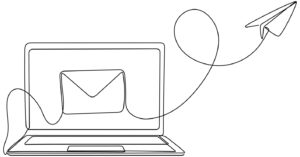How to interview like a journalist
Interviewing subjects is a vital part of the profession. Sharpen your skills.

Interviewing is an underrated skill in communications.
Whether you’re conducting a formal interview to develop an op-ed, a feature in the company magazine or a thought leadership article – or just having a casual conversation, your interviewing technique can help you get great information and forge stronger bonds with your coworkers.
But interviewing is an art. It isn’t something that comes naturally to everyone, but with a little practice and preparation, even the shyest person can become a strong interviewer.
Drawing on my experience as a journalist and editor, here are my tips for better interviews.
Start with research
Before you talk to anyone, take a few minutes to learn about who you’re talking to and what you’ll be discussing.
This can start with something as simple as checking out their LinkedIn profile or Googling their name. The most important part of this step is understanding where a person is coming from. Having an understanding of their professional experience, whether it’s past publications, interviews, or notable moments in their lives, can all help you draft smarter questions that get to the heart of what’s most interesting about them. Of course, you can’t learn everything from what’s publicly available on the web – that’s why you’re interviewing them too. But it gives you a jumping off point.
One other underrated reason to research your subject before interviewing them: you might find points of common ground where you can bond and build rapport. For instance, maybe you went to the same college, are from the same town or have the same breed of dog. Even these tiny connection points can lead to a more robust conversation. Don’t be creepy about this – you don’t want to scroll through five years of Instagram posts or say something personal about their kid. But a small, casual commonality can help people let their guard down and be more open and candid with you.
You’ll also want to research the subject matter of the interview. Now, this might be easier said than done if you’re speaking to folks in a highly technical area that you need to break down into laymen’s terms for a broader audience. Still, even reading a quick, basic article can give you some of the terminology you need defined.
This doesn’t have to be a long, laborious process. Spending just 15 minutes prepping for your interview can make it much easier to write your questions.
Draft your questions
You generally want to walk into an interview with a list of questions in front of you. But remember that these questions should be a road map rather than a script. You’ll want an idea of the information you need to get out of the interview and the questions you can ask to help get you there.
Keep these questions high level. Guide the interview – don’t dictate it.
An interview is a conversation
It’s important not to get terribly locked into a list of questions because sometimes, you don’t know what an interview is about until you’re in it. Yes, you have an objective and a story you want to ideally write about it, but ultimately an interview is about two people talking. And just like in any other conversation, you want to be free to ask follow-ups. Ask for more information. Ask for an example. Ask for a step-by-step explanation. Or just follow your interview subject down a rabbit hole – if it seems like it’s a really cool rabbit.
On the flip side: don’t be afraid to keep your interview subject on track. If you have to produce something very specific out of an interview, like a report, it probably isn’t the best time for a rabbit hunt. In that case, don’t be afraid to gently steer your subject back to the topic. A good conversation has a give and take – make sure you get what you need.
Make transcribing easier
It might be tempting to tap furious notes on the keyboard during an interview. Consider recording your interview instead, which allows you to stay present in the moment and able to follow up on interesting or curveball answers you receive – rather than five words behind, trying to type notes.
Instead, simply record. You can do this with the Voice Memo function on your phone or with your computer itself. Do ask for permission before doing this, both out of courtesy and because state laws may outlaw recording without consent. Afterwards, use an automated transcribing program like Otter.ai, a favorite of journalists everywhere. Simply upload your audio file to the site and it will produce a written transcript in a matter of minutes.
Now, this transcript will not be perfect. It will include odd misunderstandings and run-on sentences galore. But many of these transcription services also include the ability to click on the transcript and play the corresponding portion of the recording, allowing for easy corrections. It’s a huge time-saver and a great way to get a quick overview of your conversation without having to transcribe it all by hand.
From there, you should have a strong, interesting interview to use in a piece or to use to inform your research and thinking.
What are your favorite interviewing tips?
Allison Carter is editor-in-chief of PR Daily. Follow her on Twitter or LinkedIn.







